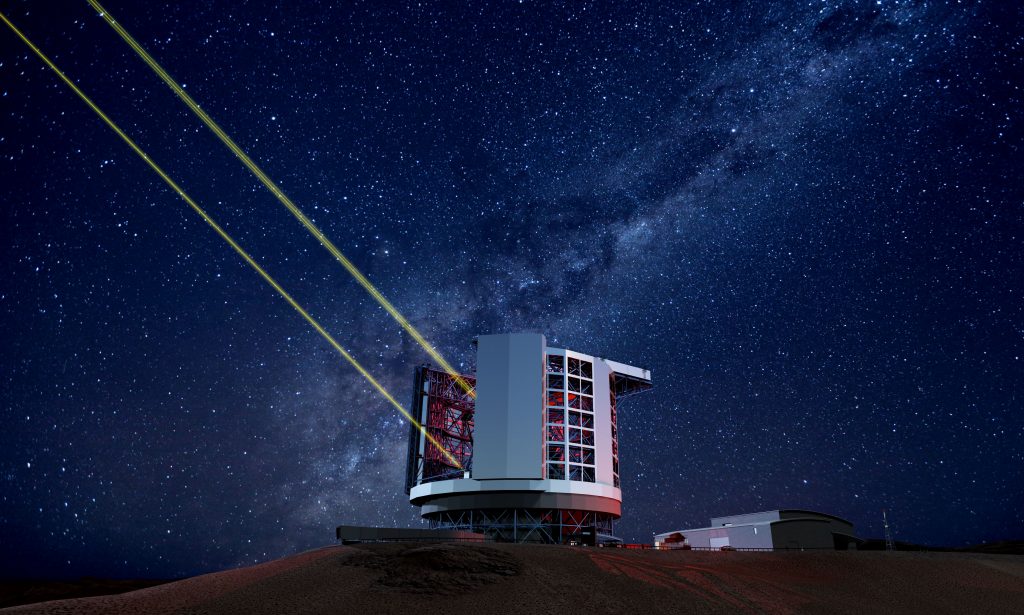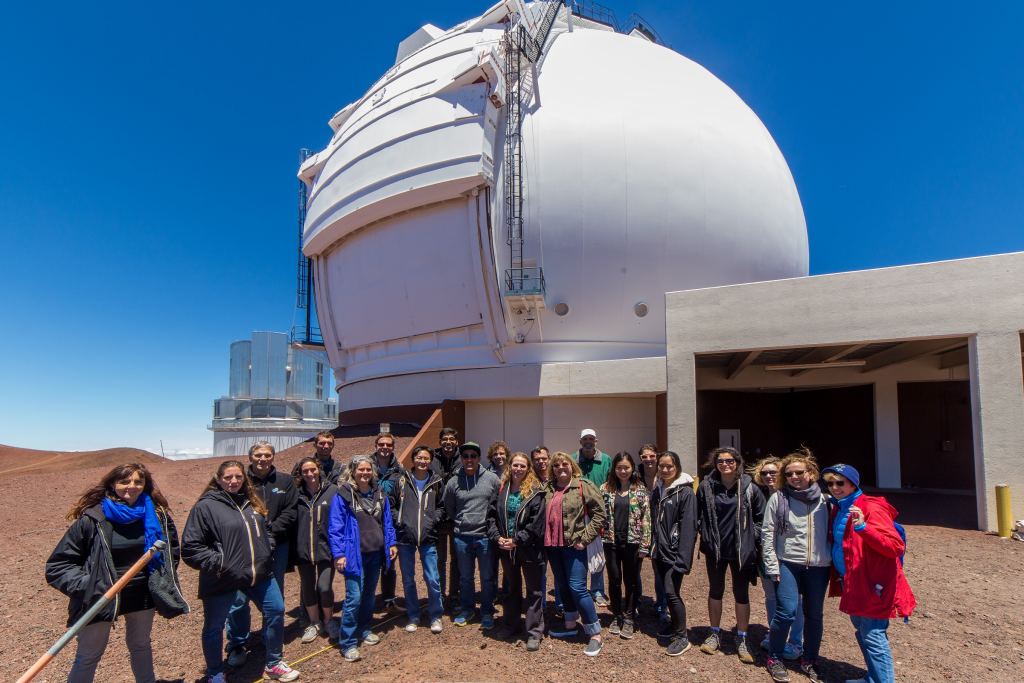Black holes are among the most awesome and mysterious objects in the known Universe. These gravitational behemoths form when massive stars undergo gravitational collapse at the end of their lifespans and shed their outer layers in a massive explosion (a supernova). Meanwhile, the stellar remnant becomes so dense that the curvature of spacetime becomes infinite in its vicinity and its gravity so intense that nothing (not even light) can escape its surface. This makes them impossible to observe using conventional optical telescopes that study objects in visible light.
As a result, astronomers typically search for black holes in non-visible wavelengths or by observing their effect on objects in their vicinity. After consulting the Gaia Data Release 3 (DR3), a team of astronomers led by the University of Alabama Huntsville (UAH) recently observed a black hole in our cosmic backyard. As they describe in their study, this monster black hole is roughly twelve times the mass of our Sun and located about 1,550 light-years from Earth. Because of its mass and relative proximity, this black hole presents opportunities for astrophysicists.
The study was led by Dr. Sukanya Chakrabarti, the Pei-Ling Chan Endowed Chair in the Department of Physics at UAH. She was joined by astronomers from the Observatories of the Carnegie Institution for Science, the Rochester Institute of Technology, the SETI Institute Carl Sagan Center, UC Santa Cruz, UC Berkeley, the University of Notre Dame, Wisconsin-Milwaukee, Hawaii, and Yale. The paper that describes their findings recently appeared online and is being reviewed by the Astrophysical Journal.
 Artist’s impression of the Giant Magellan Telescope using its laser range-finders. Credit: Giant Magellan Telescope – GMTO Corporation
Artist’s impression of the Giant Magellan Telescope using its laser range-finders. Credit: Giant Magellan Telescope – GMTO Corporation
Black holes are of particular interest to astronomers because they offer opportunities to study the laws of physics under the most extreme conditions. In some cases, like the supermassive black holes (SMBH) that reside at the center of most massive galaxies, they also play a vital role in galaxy formation and evolution. However, there are still unresolved questions regarding the role noninteracting black holes play in galactic evolution. These binary systems consist of a black hole and a star, where the black hole does not draw material from the stellar companion. Said Dr. Chakrabari in a UAH press release:
“It is not yet clear how these noninteracting black holes affect galactic dynamics in the Milky Way. If they are numerous, they may well affect the formation of our galaxy and its internal dynamics. We searched for objects that were reported to have large companion masses but whose brightness could be attributed to a single visible star. Thus, you have a good reason to think that the companion is dark.”
To find the black hole, Dr. Chakrabarti and her team analyzed data from the Gaia DR3, which included information on nearly 200,000 binary stars observed by the European Space Agency’s (ESA) Gaia Observatory. The team followed up on sources of interest by consulting spectrographic measurements from other telescopes, like the Lick Observatory’s Automated Planet Finder, the Giant Magellan Telescope (GMT), and the W.M. Keck Observatory in Hawaii. These measurements showed a main sequence star subject to a powerful gravitational force. As Dr. Chakrabari explained:
“The pull of the black hole on the visible sun-like star can be determined from these spectroscopic measurements, which give us a line-of-sight velocity due to a Doppler shift. By analyzing the line-of-sight velocities of the visible star – and this visible star is akin to our own Sun – we can infer how massive the black hole companion is, as well as the period of rotation, and how eccentric the orbit is. These spectroscopic measurements independently confirmed the Gaia solution that also indicated that this binary system is composed of a visible star that is orbiting a very massive object.”
 Members of GCOI posing in front of the Keck Observatory at the summit of Maunakea, Hawaii. Credit: W.M. Keck Observatory
Members of GCOI posing in front of the Keck Observatory at the summit of Maunakea, Hawaii. Credit: W.M. Keck Observatory
Interacting black holes are typically easier to observe in visible light because they are in tighter orbits and pull material from their stellar companions. This material form a torus-shaped accretion disk around the black hole that is accelerated to relativistic velocities (close to the speed of light), becoming highly energetic and emitting X-ray radiation. Because noninteracting black holes have wider orbits and do not form these disks, their presence has to be inferred from analyzing the motions of the visible star. Said Dr. Chakrabarti:
“The majority of black holes in binary systems are in X-ray binaries – in other words, they are bright in X-rays due to some interaction with the black hole, often due to the black hole devouring the other star. As the stuff from the other star falls down this deep gravitational potential well, we can see X-rays. In this case, we’re looking at a monster black hole, but it’s on a long-period orbit of 185 days, or about half a year. It’s pretty far from the visible star and not making any advances toward it.”
The techniques employed by Dr. Chakrabarti and her colleagues could lead to the discovery of many more noninteracting systems. According to current estimates, there could be a million visible stars in our galaxy that have massive black hole companions. While this represents a tiny fraction of its stellar population (~100 billion stars), the Gaia Observatory‘s precise measurements have narrowed that search. To date, Gaia has obtained data on the positions and proper motions of over 1 billion astronomical objects – including stars, galaxies,
Further studies of this population will allow astronomers to learn more about this population of binary systems and the formation pathway of black holes. As Dr. Chakrabarti summarized:
“There are currently several different routes that have been proposed by theorists, but noninteracting black holes around luminous stars are a very new type of population. So, it will likely take us some time to understand their demographics, and how they form, and how these channels are different – or if they’re similar – to the more well-known population of interacting, merging black holes.”

